Continuing on Saturday, February 18… after we rounded the corner of Cabo San Lucas, the conditions in the Pacific continued to get calmer and calmer. Here was the sunset on Saturday.
The smoothest seas were at about midnight, then it slowly but steadily started to pick up. It was head seas, so we were doing a bit of hobby horsing towards the end, but it really was not bad. Here was the sunrise on Sunday.
We saw three different pods of whales, and we got video of the flukes of two of them.
It can be hard to spot whales in big waves, so the sightings can be attributed to the calm conditions. When whales breathe, the water that spurts from their blowholes looks like smoke. In calm seas, the “smoke” is easy to spot. In bigger seas, it is hard to tell sea spray from the whale spouts. Likewise, when it’s calm, it is easy to see what the whale is doing once it has been spotted. In turbulent waters, It is hard to tell if you are seeing a wave or the whale moving.
Prior to our circumnavigation, we saw whales once near Ensenada. When we were in Tonga, we went on a sightseeing boat on a whale excursion where Christi swam with Humpback whales. When we were in Dominica, we went on a sightseeing boat to see Sperm whales. But, believe it or not, on our circumnavigation, the only time we saw whales from our own boat was on the Cabo to Ensenada stretch. Over the last 14 years since completing our circumnavigation, we have seen whales in the California waters quite a few times during whale season (Mid-December through Mid-April), but seeing them wasn’t exactly common for us. Each whale sighting was thrilling for us, and seeing so many on this passage was uber-exciting.
The entrance to Magdalena Bay was visible by about 0730.
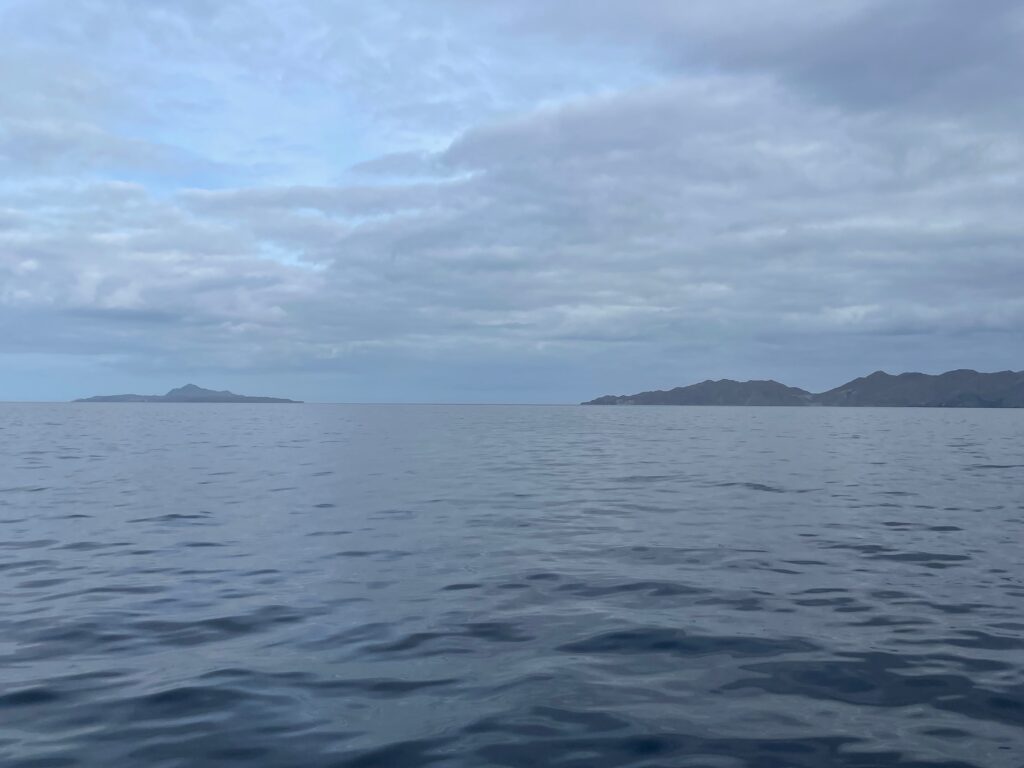
We’re always cautious, but our recent visit to the archaeology museum, which had exhibits about the six sunken ships around the bay’s entrances, had us feeling extra cautious. Here was the shipwreck map from the museum.
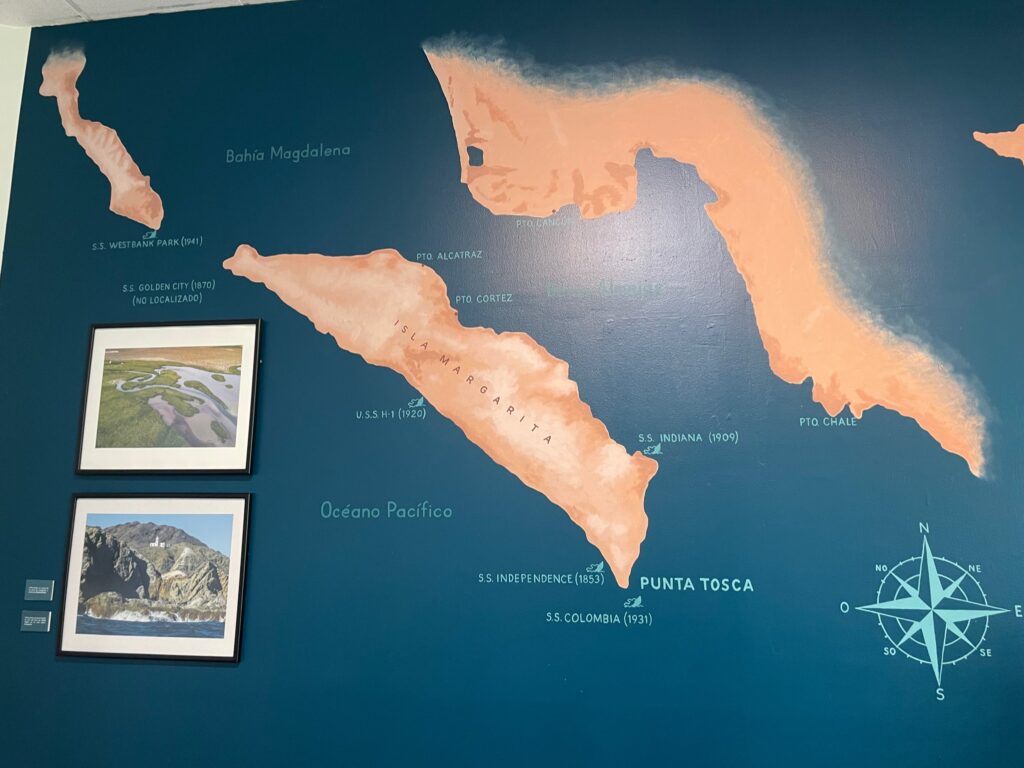
We came through the entrance at around 1000. Unfortunately, it was the strongest current of the day, so we did only 3-4 knots for the whole 6-nm ride from the mouth of the bay to Man of War Cove, the small village where the anchorage was.
One of the bright sides of going slow was that it gave us time to whale watch. The mouth of the bay was where the whales were most concentrated. We only saw two whales, and the whales were hanging around two whale-watching pangas.
Just beyond where the pangas were whale watching, we passed a small peninsula that looked like it was currently a fishing camp. There was wreckage of what looked to have once been a dock or pier for very large boats. Our guess was that it had been destroyed in a hurricane and never rebuilt. We also wondered if it had been built for whaling boats. We’ll have to look it up.
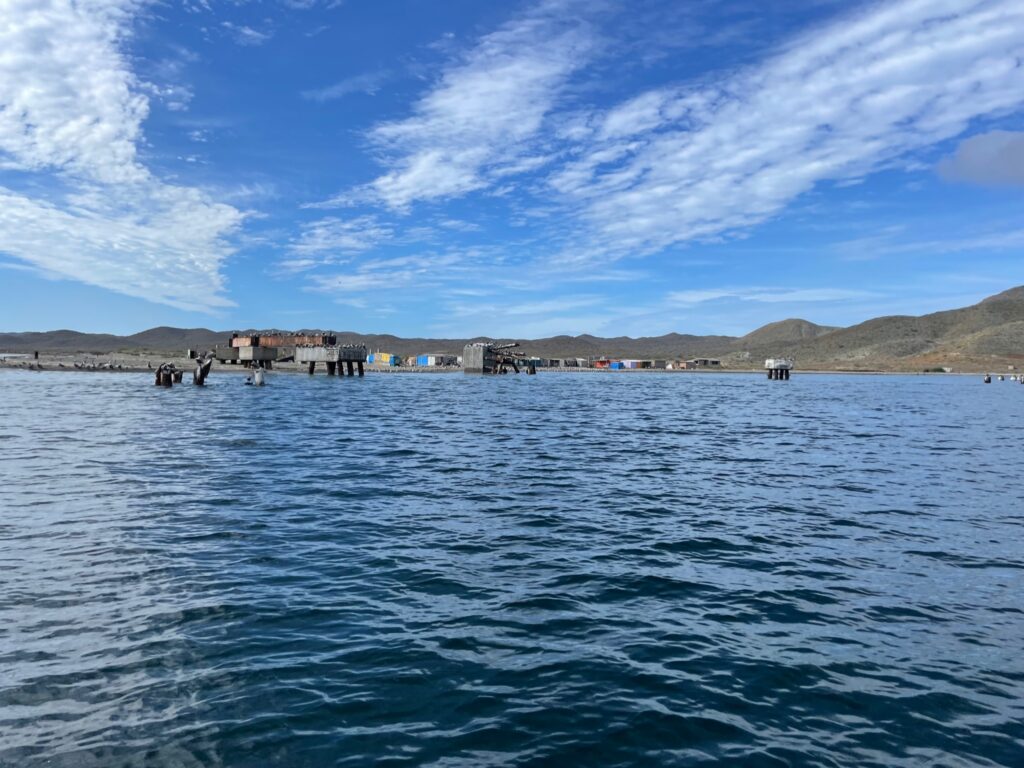
Between the peninsula and the village, there was a consistent line of fish traps in the shallower water closer to the shoreline. It looked like there were at least two glamping grounds on the outskirts.
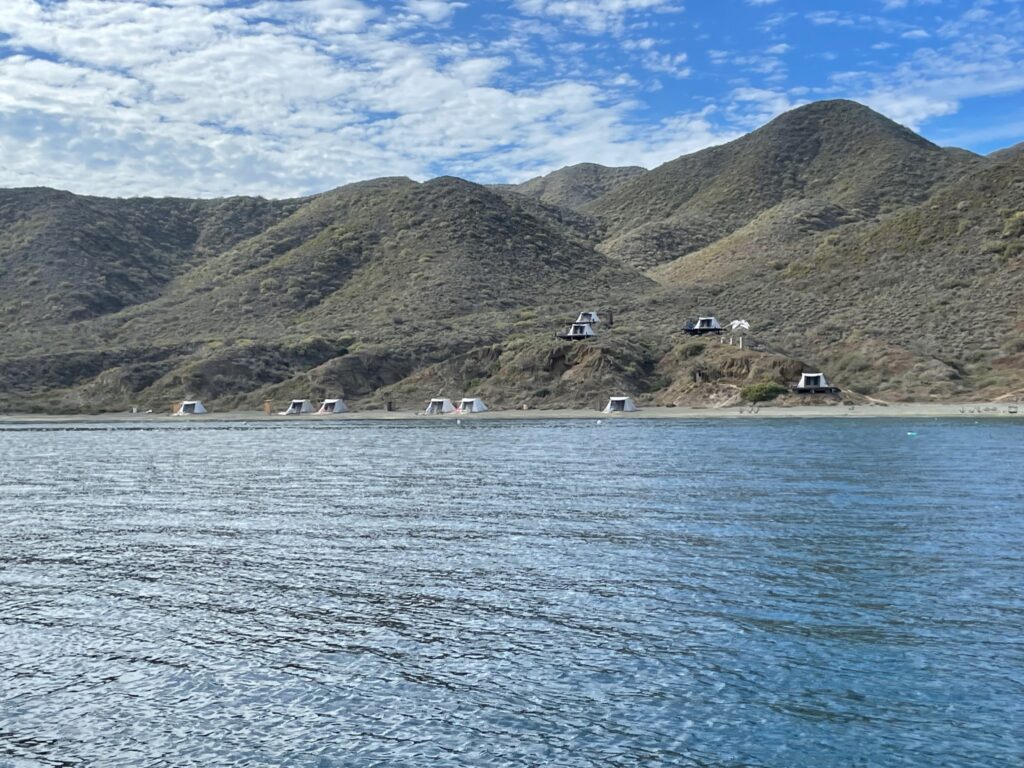
The village was a cluster of buildings along the shore in an elbow within the bay. The village formed in this remote location because the elbow offered protection from the northerly winds and waves.
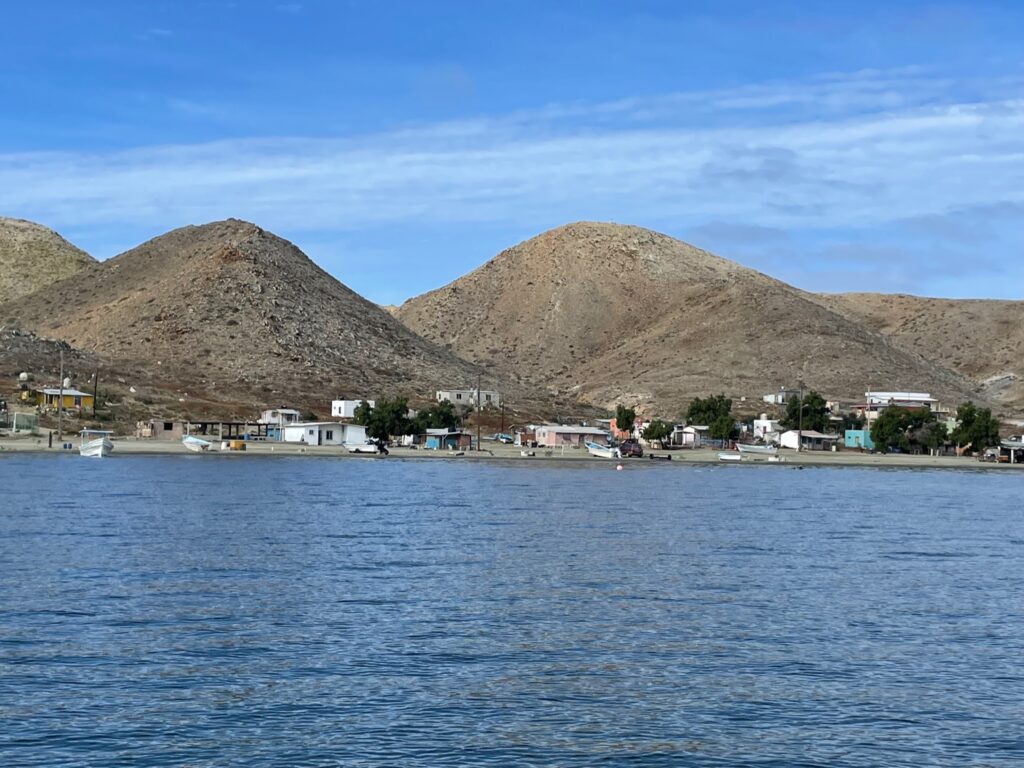
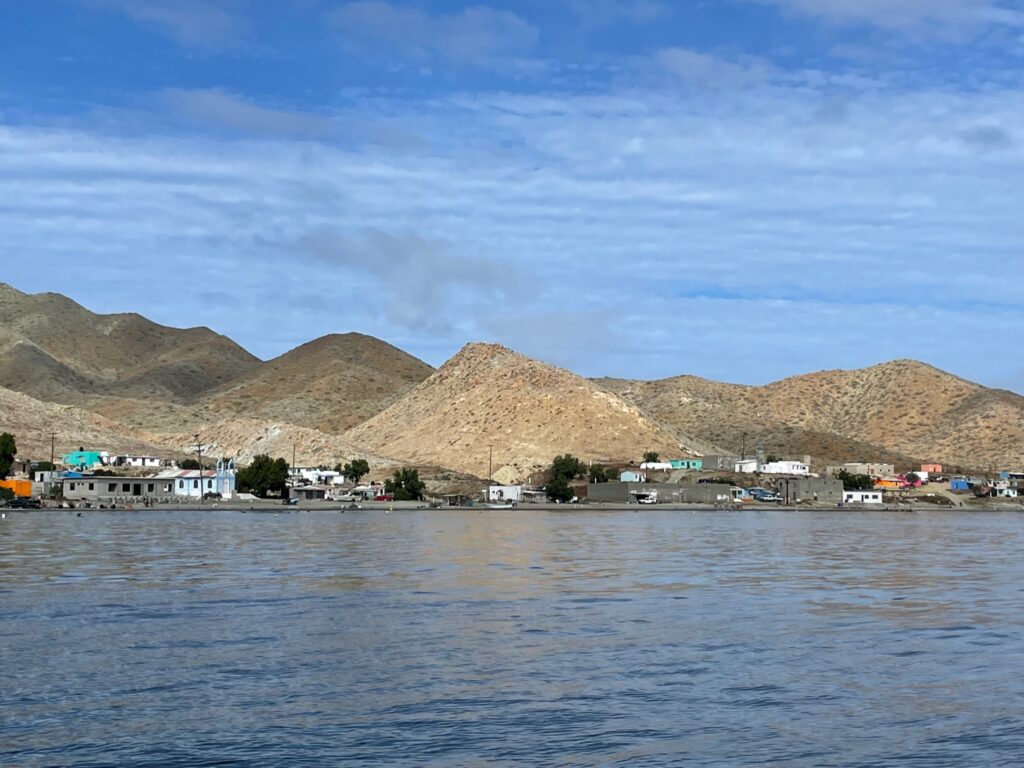
In good news, Eric’s anchor protector worked great. The anchor didn’t make any noise the entire passage. But, Christi wasn’t strong enough to dismantle the anchor protector, so we had to station-keep for a little bit while Eric removed it so that we could drop the anchor.
We were pleased to find that the anchorage was calm and peaceful. We were exhausted from the erratic sleep schedule during our passage, so we were too tired to get the dinghy down and go to shore. Eric and Christi took naps in the afternoon and we had an early night.
